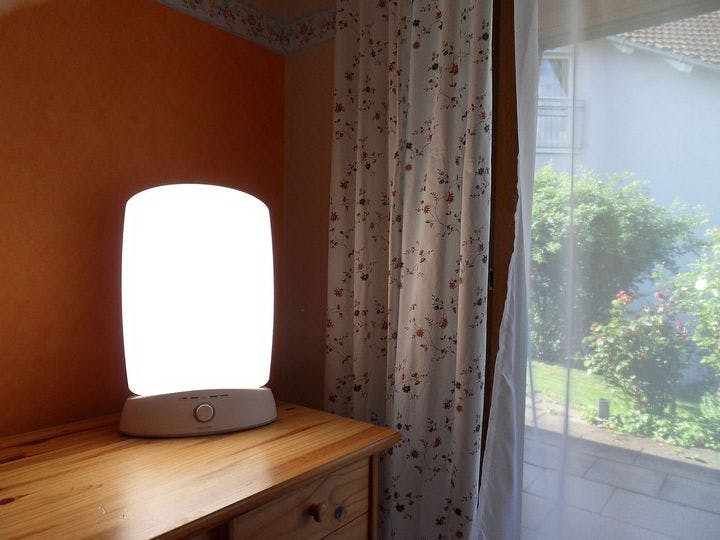Illuminating the many benefits of natural light
– Erin Amato
Can changing a lightbulb change your life? Perhaps.
For Satchin Panda, childhood brings back memories filled with natural light: catching fish, lounging in a hammock, picking ripe mangoes. Now, as a molecular biology professor in La Jolla, California, his fluorescent lifestyle differs markedly from his sunlit youth in Chandipur, India.
Unfortunately for Panda (and millions of others who spend much of their waking life indoors), this lack of natural light comes with a cost, writes Intelligent Life associate editor Rosie Blau. A growing body of research illuminates a simple truth: getting too little daylight may also do long-term damage to our health.
With a simple flick of the switch, we’ve changed how and when the day ends — defined not by the solar cycle, but instead by the amount of artificial light we choose to keep the night away. “When we override the light-dark cycle of the natural world,” says Blau, “we are disrupting the internal workings of the human body.”
Take, for instance, sleep loss. From the flickering oil lamps of the 1880s to the lingering glare of tablet LED screens, Americans now sleep 20 percent less than a century ago, according to the National Sleep Foundation. Without adequate sleep, our immune system pays the price; sleep loss makes us “not only liable to catch a cold, but more susceptible to some types of cancer.” In addition to irritability, chronic sleep loss causes excessive hyperactivity in children misdiagnosed with ADHD.
Though the scientific community widely acknowledges that health problems are worsened by sleep deficits, little attention has been paid to the benefits of natural light on the sleep cycle. As such, the study of sunlight’s positive effects is still in its infancy — as is the research into the long-term adverse effects of a life spent languishing in dim or artificially-lit rooms.
That’s beginning to change as researchers explore the tangible benefits of natural light — not only as relates to sleep, but in our emotional and mental wellbeing. In one recent study, workers at a Sacramento call center were stationed in windowless rooms and tested against their sunlit counterparts; those employees with access to a window processed calls 6-12 percent faster than those subject to fluorescent light only. Similarly, a hospital-based study in Canada found that female heart attack patients recovered more quickly if exposed to abundant natural light, a finding that could alter the way hospitals are built and patients are treated.
Our internal clocks control the sleep-wake cycle, but do so while “also respond[ing] to the environment, especially light and dark,” Blau explains. The presence of blue light, for instance, helps to sync our bodies’ clocks to “external cues of day and night.” Our natural sleeping and waking rhythms become distorted because artificial light does not produce the same wavelengths as natural light.
What’s so special about blue light? The answer may be related to Panda’s recent discovery of melanopsin, a specific photoreceptor in the eye sensitive to blue light. Through experimentation, he was able to deduce that every animal has melanopsin, “even the blind catfish,” which “registers the blue light and helps to reset and synchronize the biological clock on a daily basis.” In a test, blind mice with melanopsin were compared to blind mice without the photoreceptor; the mice without melanopsin had wildly more irregular sleeping and waking patterns than their counterparts.
What does this mean for humans? Blau asks Kazuo Tsubota, professor of ophthalmology at Japan’s Keio University School of Medicine. Tsubota’s secret to happiness? Not laughter, not wealth, but a good night’s sleep. Motivated by gokigen (‘a life filled with happiness’), he advises his cataract patients to follow his example: spending more time in daylight, limiting intake of “radiant, illuminous screens,” and, in turn, sleeping soundly.
Don’t shut off that iPad just yet, says Mariana Figueiro of the Rensselaer Polytechnic Institute. Figueiro (who studies how shift workers function at different light levels) agrees that “we need more light to synchronize the circadian system than we do to see,” but unlike Tsubota, she sees illuminated screens as a potential salve — with iPads acting, in Blau’s words, “as light therapy by day to help invigorate us and reset our clock.”
While daylight is not intrinsically better than electric light, Figueiro believes getting artificial light to do the same job “is more expensive, uses more energy, and is more difficult to get right.” But this investment — even on a small scale — can make a substantial difference; since the elderly have declining abilities to absorb blue light, Figueiro installed bright lamps to TV screens at an assisted-living facility to improve their circadian rhythms. Sure enough, these residents slept more soundly.
Blau proposes solutions to mitigate the sunlight deficiency plaguing America: programming electronics to limit blue light, buying brighter desk lamps, and manipulating LED lights in lightbulbs to “mirror the natural world” — all ideas that stem from a question Satchin Panda asked Blau: “what if you can change a lightbulb and change your life?”
The Source: “The Light Therapeutic” by Rosie Blau. Intelligent Life, May/June 2014.
Photo courtesy of Wikimedia Commons
